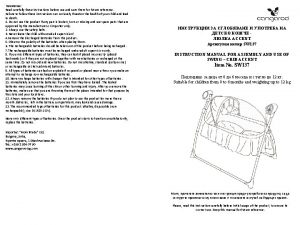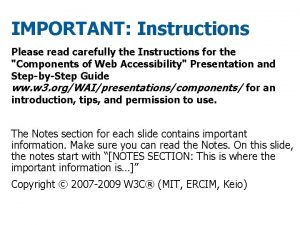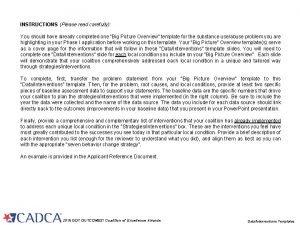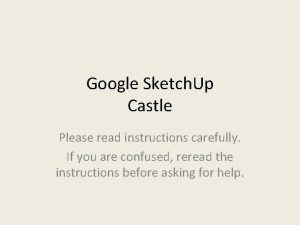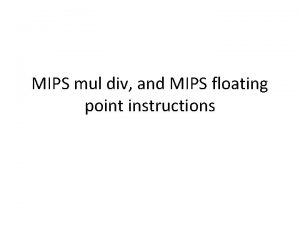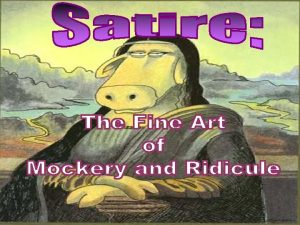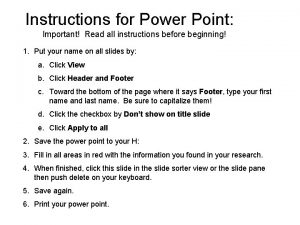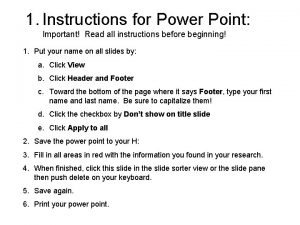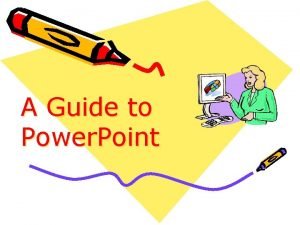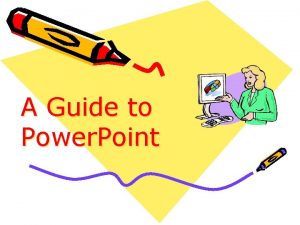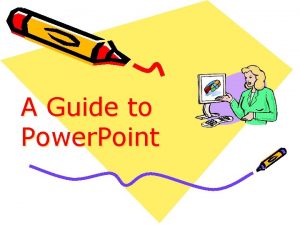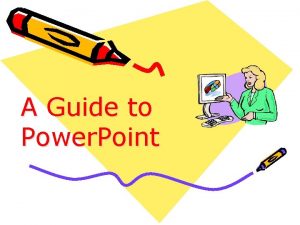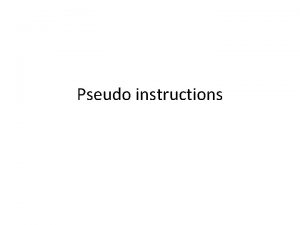Instructions Read through this Power Point presentation and

































- Slides: 33


Instructions: • Read through this Power Point presentation and take notes on key details • Complete the assignments at the end of the presentation. • The purpose of the presentation is to prepare you for our next unit which will examine authors who challenge and satirize societal conventions.

Satire Defined • A literary genre based on criticism of people and society • Ridicule and mockery are often mixed with humor throughout a work of satire

Purpose of Satire • The satirist aims to influence change by laughing scornfully at those being mocked — and by being witty enough to allow the reader to laugh also.

Purpose of Satire (continued) • The satirist's goal is to point out the hypocrisy of the target • By highlighting inconsistencies the target is made to look ridiculous

Targets of Satire • Works of satire usually attack the following: – – human frailty people institutions ideas

Examples in Literature • In Mark Twain’s The Adventures of Huckleberry Finn the racism of the deep south is satirized. • Huckleberry’s conscience, warped by the racist world in which he has been raised, often bothers him most when he is at his best. • Ironically, he is prepared to do good, believing it to be wrong.

Satire & Parody: The Difference is Subtle • Satire • Parody • Using humor to point out weaknesses of society • Usually sarcastic funny (not so much haha) • Makes a serious point • Using humor to mock or imitate a person or situation • “haha” funny • Often involves exaggeration

• Satire • Parody • Although satire is meant to be funny, the purpose of satire is not primarily humor in itself so much as an attack on something of which the author strongly disapproves, using the weapon of wit. • A work created to mock, comment on, or poke fun at an original work, its subject, author, style or some other target, by means of humorous, satiric or ironic imitation.

Examples in Literature • Aldous Huxley’s Brave New World satirizes the state of the modern world by presenting an exaggerated future where people don’t have serious relationships. • People no longer have individual opinions and are classified from birth into castes.

Examples in Literature • George Orwell’s 1984 and Animal Farm • Both of Orwell’s works satirize a society where government has complete authority over the people.

Examples in Television • Stephen Colbert’s television program The Colbert Report satirizes other television personalities, various social issues, and, most notably, political candidates and political decisions.

Example of Parody • SNL- Justin Timberlake- Beyonce • In what ways is this video an example of parody?

Examples from Film • Almost all spoof movies contain elements of satire, poking fun at stereotypical film plots, situations, and characters


Satire In Action • Remember: Satire often pokes fun at some institution, person or aspect of human weakness • In the following cartoons, try to specifically point out what is being satirized. • Also try to come to a conclusion about what the artist/author wants his audience to think about by viewing the cartoon

Satire in Action • What is being satirized? • What change does the artist possibly want to inspire?

Possible Responses: • What is being satirized? – The artist is satirizing our youth’s preoccupation with games, computers and other technology. It is also satirizing parents who allow their children so much access to these distractions. • What change does the artist possibly want to inspire? – The artist wants children to play less games and for parents to step in and make their children focus on activities that will help them later in life.

Satire in Action • What is being satirized? • What change does the artist possibly want to inspire?

Satire in Action • What is being satirized? • What change does the artist possibly want to inspire?

Satire in Action • What is being satirized? • What change does the artist possibly want to inspire?

Satire in Action • What is being satirized? • What change does the artist possibly want to inspire?

Satire in Action • What is being satirized? • What change does the artist possibly want to inspire?

Satire in Action • What is being satirized? • What change does the artist possibly want to inspire?

Satire in Action • What is being satirized? • What change does the artist possibly want to inspire?

Satire in Action • What is being satirized? • What change does the artist possibly want to inspire?

Satire in Action • What is being satirized? • What change does the artist possibly want to inspire?

Satirical Techniques EXAGGERATION: Satirists use this technique to enlarge, increase, or represent something beyond normal bounds so that it becomes ridiculous and its faults can be seen. • Caricature is the exaggeration of a physical feature or trait • Burlesque is the exaggeration of language • Understatement is the opposite of exaggeration but can often serve the same purpose INCONGRUITY: Satirists use this technique to present details that are out of place or absurd in relation to their surroundings. Oxymoron, metaphor, and irony often create incongruity. PARODY: Satirists use this technique to imitate some person, place, or thing in order to ridicule the original. REVERSAL: Satirists use this technique to present the opposite of the normal order.

Satirical Techniques in The Simpsons Watch this video clip that shows how The Simpsons uses these four techniques: (write them down) https: //www. yout ube. com/watch? v =8 M-Kl. V 5 c. PUo

Satirical Techniques in Shrek Watch the following scene from Shrek and look for examples of exaggeration, incongruity, parody, and/or reversal: (write down 3) https: //www. yout ube. com/watch? v =q 2 a. F 3 h 7 yx. YU

Sample Satirical Analysis: Shrek In their film Shrek, directors Andrew Adamson and Vicky Jensen satirize the stereotypical “Disney princess” representation of women depicted in numerous works of animation. Common satirical devices are employed throughout the scene in which Princess Fiona finds herself in need of rescue from a band of “merry men. ” As soon as she is captured, roles begin to reverse, thus subverting the image of the typical damsel in distress. Here there is no dramatic rescue by Shrek, her knight in shining armor. Ironically, he and his sidekick Donkey merely stand by and watch as Fiona saves herself. Her confidence is on grand display as the directors exaggerate her fighting prowess. With ridiculously little effort, Fiona takes out an entire entourage of armed men in a Matrix-style parody of Neo fighting an army of Agent Smiths. In the slowmotion air-kick shot lifted straight from The Matrix, Fiona even pauses to fix her hair, an absurd incongruity suggesting that femininity and fierceness are not polar opposites. As a whole, the scene serves to bring the fairy tale princess into a modern context with a very modern satirical message: women are no longer content to be relegated to subservient roles.

Satirical Techniques in Austin Powers Watch the following film and look for examples of exaggeration, incongruity, parody, and/or reversal: https: //youtu. be/Ezkz. C Swhsx 8

Assignment: Satirical Analysis of Austin Powers Alone or with a partner, write a satirical analysis paragraph on the clip from Austin Powers modeled after the on Shrek in this presentation. Turn in your analysis upon completion.
 Presentation topics for students in hindi
Presentation topics for students in hindi Power point presentation design west vancouver
Power point presentation design west vancouver Real power formula
Real power formula Power bi power point
Power bi power point Please read the carefully before you fill out the form
Please read the carefully before you fill out the form Please read instructions carefully before use
Please read instructions carefully before use Please read carefully the instructions
Please read carefully the instructions Please read carefully the instructions
Please read carefully the instructions Please read carefully the instructions
Please read carefully the instructions Please read the instructions carefully before starting
Please read the instructions carefully before starting Point point power
Point point power Advantages of tangential sawing
Advantages of tangential sawing Closed comedoned
Closed comedoned By one man sin
By one man sin Furcation involvement classification
Furcation involvement classification My mother twisted through and through
My mother twisted through and through Div mips
Div mips Main idea nonfiction
Main idea nonfiction Read-through cache
Read-through cache Read through the syllabus
Read through the syllabus Brow presentation birth
Brow presentation birth Cephalic presentation
Cephalic presentation Hub and-spoke vs point-to-point pros and cons
Hub and-spoke vs point-to-point pros and cons Steve jobs walking
Steve jobs walking Leading through change presentation
Leading through change presentation Solar power satellites and microwave power transmission
Solar power satellites and microwave power transmission Actual power and potential power
Actual power and potential power Define dispersive power of grating.
Define dispersive power of grating. Prayer point for power and authority
Prayer point for power and authority Disadvantages of debate ppt
Disadvantages of debate ppt How power can be leveraged through persuasion
How power can be leveraged through persuasion What is the speaker's tone in let it go
What is the speaker's tone in let it go Point by point compare and contrast
Point by point compare and contrast Dew and bubble point
Dew and bubble point





